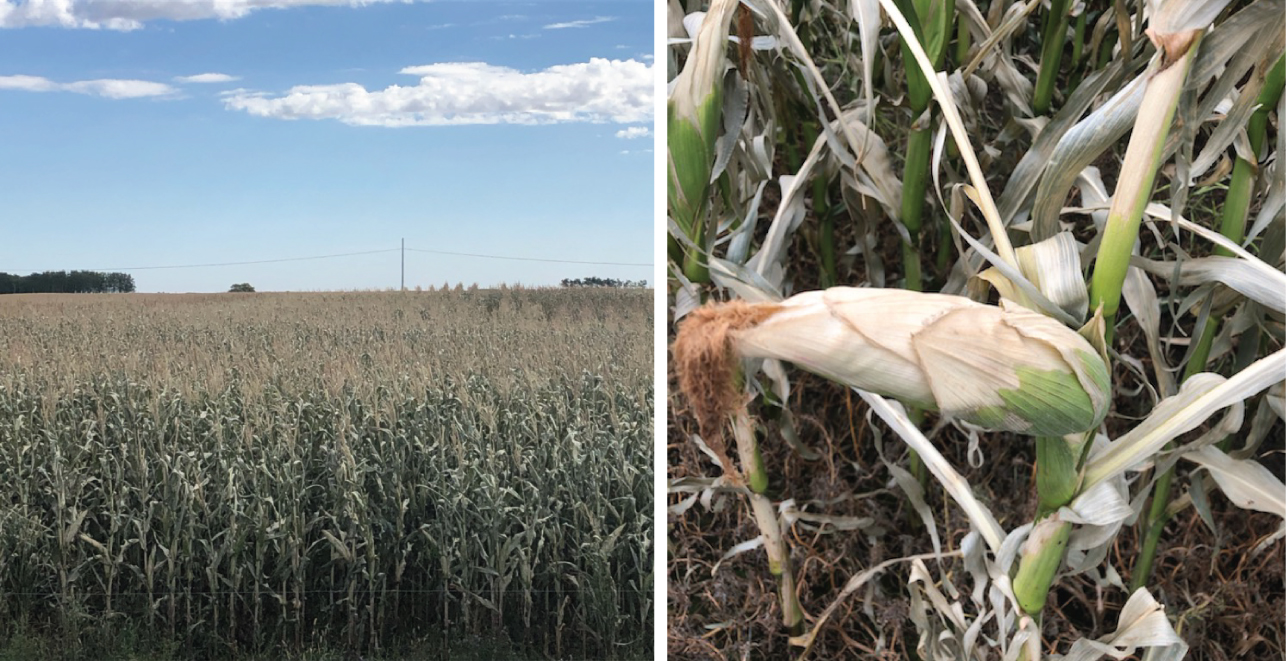When Corn Gets a Cool Reception

By Geoff Geddes
While farmers are usually warm hosts, they would love to give frost the cold shoulder. In years where you can’t avoid it, however, there are some things to keep in mind when frost might get to your silage corn.
“Damage from frost depends on its severity and duration, as well as the stand of the corn, how thick it is,” says Dieter Schwarz, Corn Product Line Manager/District Sales Manager for NorthStar Genetics. “Frost will harm leaf tissue and cause the leaves to die first, and it depends on how far down the plant frost gets as to how much of the leaves are affected.”
Unless it is a really deep frost – below about -5°C – the stalk will usually stay intact and still bring nutrients to the ear of the plant. Because most moisture on a corn plant is in the stalk and ear, the plant will still dry down at its regular speed if the stalk is not impacted.
“After the corn plant freezes, it becomes hard to stage timing for silage harvest, so the best way is to sample and evaluate,” says Schwarz. “You may have to do this every day as the crop progresses.”
The good news is that if you have an intact stalk and immature ear, the plant may continue to mature and put some starch in the ear for you. An early frost will impact feed value somewhat, resulting in lower starch and higher sugar in the stalk. Still, be careful not to overestimate the damage that frost can do.
“Generally, we are at about 85 percent of yield if we get a bad frost, and, more often than not in Manitoba, we are far enough along that frost will just speed up our need to harvest,” says Schwarz.
Despite those words of encouragement, Schwarz preaches caution with frosted corn.
“With frost you can often get nitrate accumulation in the lower stalk, so silage harvesters often compensate by cutting higher. Since there’s a lot of moisture and tonnage in the stalk, you can lose up to 15 percent of yield by cutting high. The only way to tell what is needed is by testing. If you have a woodchipper at home, before you cut high based on assumptions, cut a thousandth of an acre and send it to the lab.”
Growers are also advised to split their risk by growing more than one hybrid, as each one matures differently and is uniquely affected by frost.
“I like to see two or three hybrids on a farm,” says Schwarz. “If you have your own harvester and can pile things separately in your pit and stagger harvest, that will spread out your risk. You can have an early hybrid that matures ahead of the average frost date, one that is ready right when frost appears, and then play the long game with another hybrid maturing two or three days after the frost date. It really depends on every farmer’s risk level, but if you can manage this approach, I would strongly recommend it. It is the same reason that you diversify your investment portfolio, and you often have more invested in the field than in your RRSP.”
With aspects like frost, a philosophical approach may lessen your stress.
Schwarz stresses the need to put things in perspective when dealing with this unwelcome guest.



